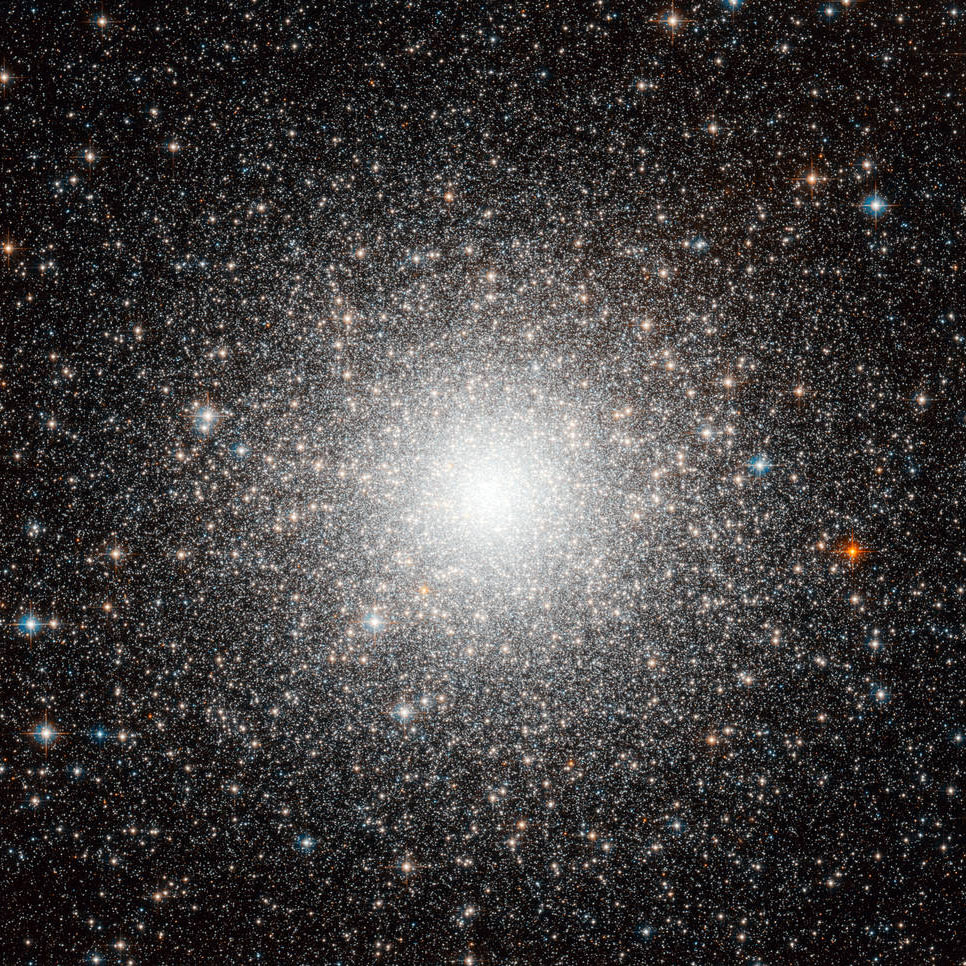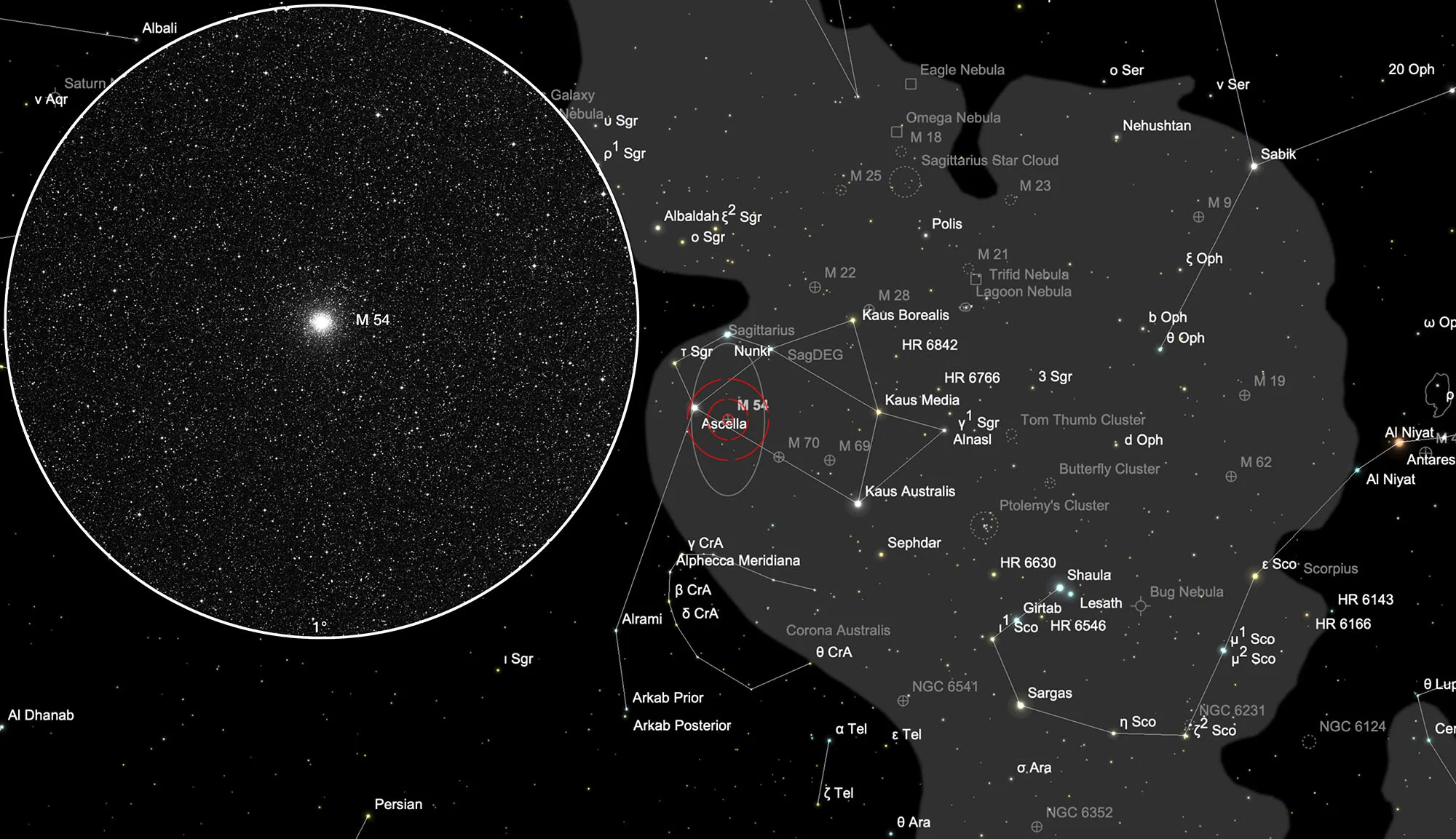Globular Cluster Messier 54

History
The globular cluster M 54 was discovered by Charles Messier on 24th July 1778, and NGC 6715 was later included in J. L. E. Dreyer's 1888 «New General Catalogue of Nebulae and Clusters of Stars». Messier described his 54th discovery as «a very bright nebula, discovered in Sagittarius, bright in the centre and containing no star as seen with a 3.5 feet achromatic telescope [focal length]». Probably John Herschel was the first to break up the globular cluster into single stars in 1834. [4]
Physical Properties
M 54 is the second most massive globular cluster. Distance measurements result in a distance of 88'100 to 97'800 light years [145]. The globular cluster is therefore very far from the Milky Way. At first it was assumed that it belonged to the Milky Way, but in 1994 it became clear that M 54 actually belongs to the neighboring Sagittarius Dwarf Galaxy (Sgr dSph, Sag DEG). This dwarf galaxy is in a spiral, polar orbit around the centre of the Milky Way and is currently about 50'000 light years away from it. Due to the force of gravity, the Milky Way will incorporate this dwarf galaxy including globular clusters. From our perspective, M 54 lies exactly in the centre of this dwarf galaxy, which is why it was first suspected that its core was there. However, a study showed that both have different stellar populations and therefore must have originated independently of each other. They found each other later through gravity. [215, 278]
| Designation | NGC 6715 |
| Type | GCL (III) |
| Right Ascension (J2000.0) | 18h 55m 03.3s |
| Declination (J2000.0) | -30° 28' 40" |
| Diameter | 12 arcmin |
| Visual magnitude | 7.7 mag |
| Metric Distance | 26.500 kpc |
| Dreyer Description | globular, vB, L, R, g, smbM, rrr, st 15 |
| Identification, Remarks | h 3763; GC 4442; M 54; GCL 104; ESO 458-SC8 |
Finder Chart
The globular cluster is located in the southeast corner of the teapot in the constellation Sagittarius, about 1.75° WSW from the double star Ascella (ζ Sagittarii). The best time to observe is March to December.
